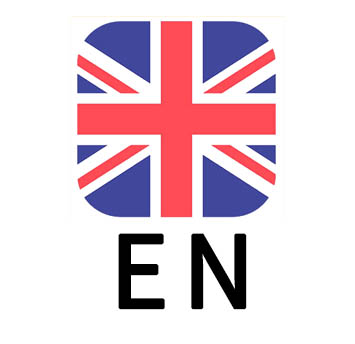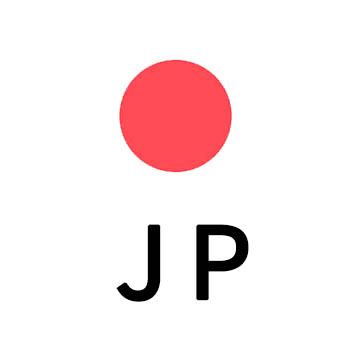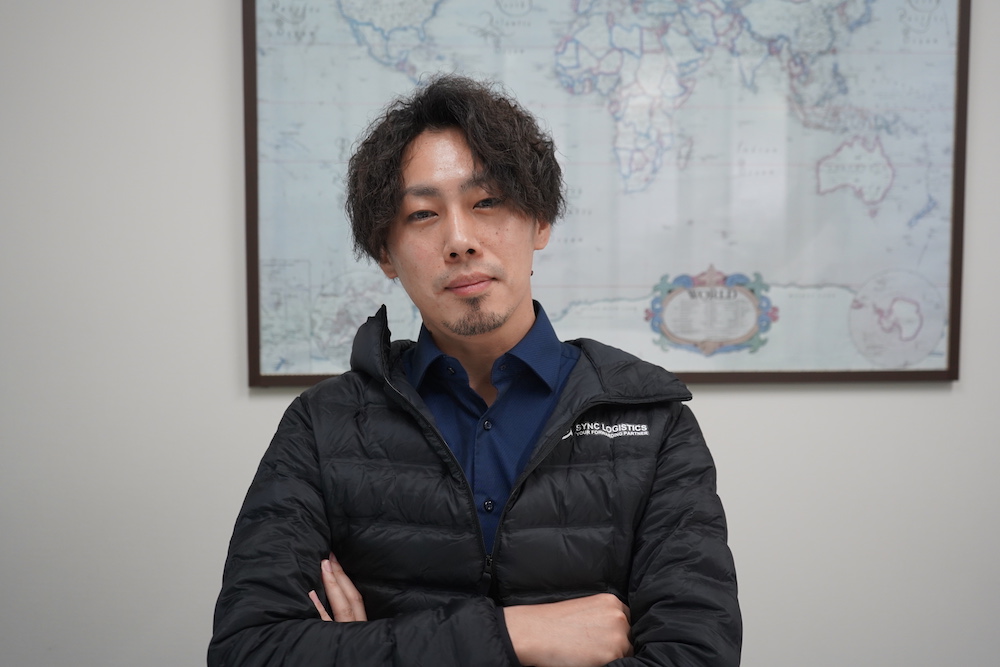
Taking on challenges in a new field, and managing two sections simultaneously. What are the rewards and work techniques in such a job?
Profile of Akihiro Ohbuchi, Manager of the Hakata Operations Section and Business Promotion Section of the Shipping Operations Department
After withdrawing from the National Institute of Technology, Kurume College and studying in the USA, he joined Sync Logistics in June 2014. Currently, he is the manager of both the Operations Section and the Business Promotion Section of the Fukuoka office where he is responsible for improving operations processes and training subordinates.
After Much Debate, Betting on Sync Logistics during its Early Years
I joined Sync Logistics when its president, Mr. Ichiki, approached me during the company’s early years because he was looking for employees. It was during the time I was looking for a job in Tokyo, having finished my studies in America. At the time, the company’s head office was in Fukuoka, so I was debating on going to Fukuoka or continuing my job search in Tokyo. Sync Logistics was a venture company that was just established so it could succeed or fail. I didn’t know which way it would go, and it was a gamble.
I decided to join the company because I thought that in a venture company, I might be able to get to its innermost part. I thought it could be an environment where my actions would directly appear as results. Instead of starting as a new grad in a Tokyo company, I thought it would be better if I could pave a way with my own abilities, so I decided to accept Sync Logistics’ offer.
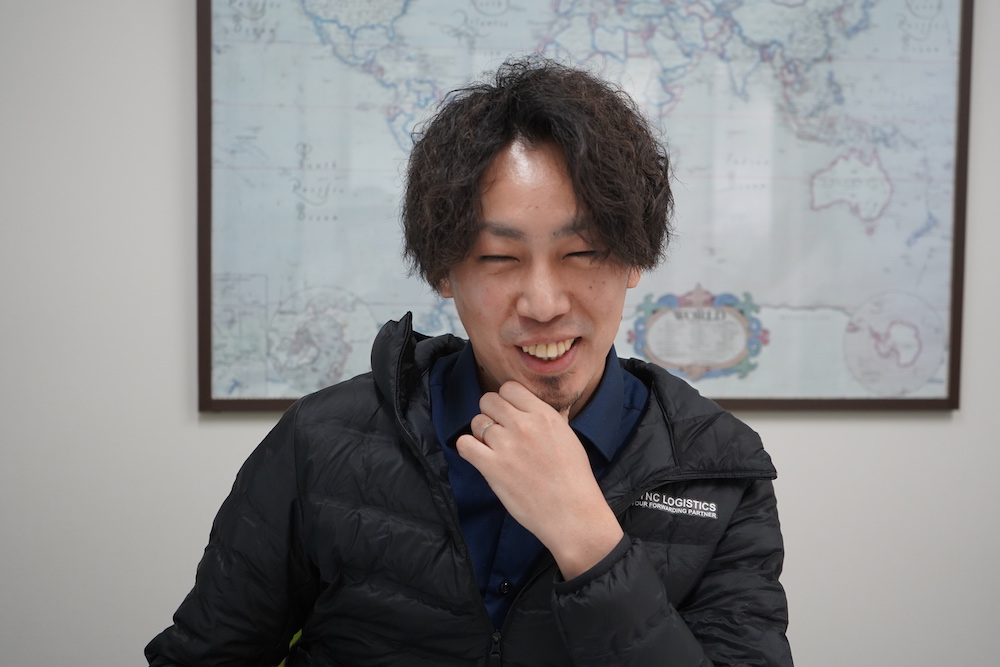
Challenging Myself in Fields Where I Can Show my Value
When I joined the company, I was put in charge of operations at the Hakata Yard. My main responsibilities were arranging the shipping and scheduling of used cars for export, and preparing customs clearance documents. As the company grew, we started operating yards in Osaka, Yokohama, and Nagoya, and the number of employees also gradually increased.
I gained a lot of experience in five and a half years, and before I knew it, I was promoted to a leadership role. I was sent on a long-term business trip to our Kawasaki head office. My main job there was to revamp “La-Plus,” the operations system we developed in-house. La-Plus is a platform where various stakeholders such as customers, shipping companies, customs brokers, and yard workers could share information. I gave ideas and defined requirements to enhance La-Plus’ functions and improve the efficiency of our operations. We then worked with the systems company we outsourced the development of La-Plus to in order to update it.
Also at the Kawasaki office, I began working on structuring operations. Although I wasn’t instructed by anyone to do so, at the time there was a concern that the company’s operations was becoming individualized. There was no unified operations manual, and as the number of employees increased, there were variations in how operations were being carried out.
We all realized that we needed to verbalize and systemize our business processes, so I decided to take on the task. It was also a time when I was thinking of shifting my work to other fields other than operations where I can show my value, so I consciously tried to change my position within the company.
Rewarding Work in Discerning the Essence of Problems and Improving Business Processes
After completing my long-term business trip and returning to Fukuoka, I started working in earnest at the Business Promotion Section. Basically, the section identifies bottlenecks in business processes by interviewing those in charge. We also launch and run small projects based on ideas for improvement simultaneously. The projects can be categorized into two: those that solve current problems, and those that lay the groundwork for the future.
Then, we organize the problems we have identified, probe into their causes, and do what needs to be done. At first, the essence of a problem remains vague, so it’s difficult to discern its essence. That’s why I feel a sense of accomplishment when what I have thought of and built begins to function well.
For example, a while back, I created an internal portal site for the company. We have many tools such as spreadsheets and survey forms for general administration applications and other tasks, so I decided to centralize them. Up until ten, we couldn’t grasp what tools each person was using to complete their tasks, but the portal site made the tools used visible to all of us. The portal site has taken root throughout the company, and I feel it’s functioning well.
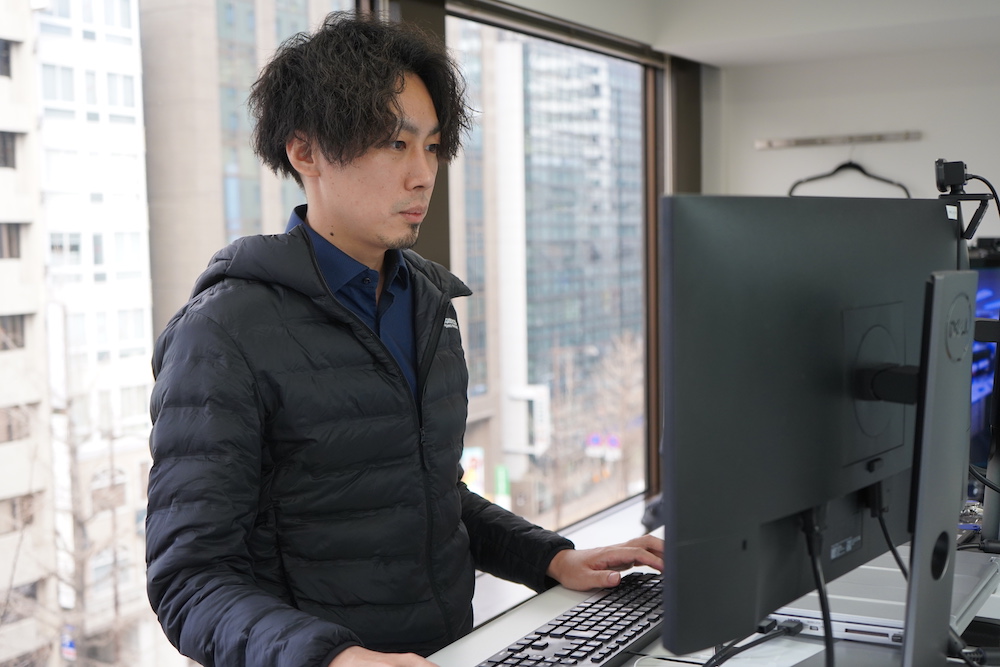
Concurrently Managing Two Sections
As part of the company’s reorganization, six months after I returned to Fukuoka, I was made Leader (section manager) of the Hakata Operations Section. Basically, I don’t stick my nose into day-to-day operations, but I do give advice when decisions need to be made.
In my work at business promotion where I often have to think strategically with the future in mind, I need to switch perspectives when I also work at the Operations Section because at the Operations Section, I often have to deal with problems that have just arisen. When I have my sights on something far away and I suddenly have to look at something close up, it feels as if my eyes are out of focus. Sometimes I find it difficult to switch between the two.
When various tasks overlap, I prioritize them and deal with the most urgent and important ones first. I divide the work into several small parts and arrange them chronologically – most times this is how I work.
There is a market characteristic especially in this industry that when a country’s economy improves, customer trends become active all at once. When this happens, the volume of cargo we handle rapidly increases, which is tough work-wise during busy seasons. Unexpected problems sometimes occur, so it’s important to deal with them while considering our priorities.
An example of a major problem was the typhoon that hit the Kinki area in 2018 which caused widespread damage to our Osaka Yard. Customers’ cars were overturned, car and office windows were broken, containers tipped over. It was a wreck, but we dealt with it by sorting out the situation while prioritizing what needed to be done, and establishing a system of what needed to be done first. As a result, we didn’t have problems with our customers, and we managed to restore the yard in less than a month.
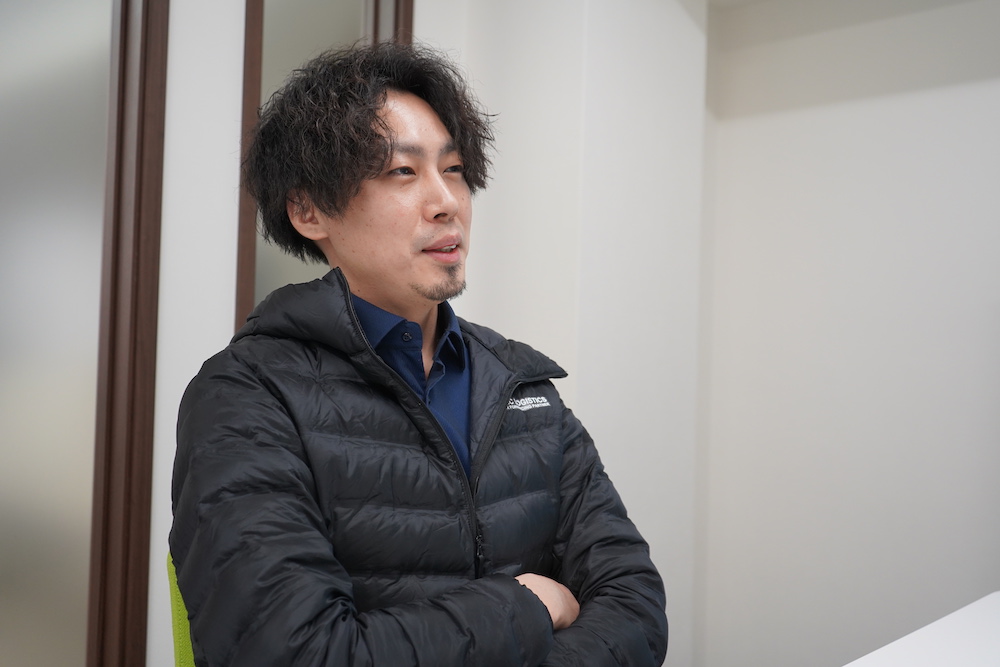
Sync Logistics is Suited to Those Who are Up for a Challenge
Because problems often occur in operations work, those who have a sense of responsibility and can complete the work until the very end are suited to what we do at Sync Logistics. Also, those who can work with all kinds of people in and out of the company while continuing to work are also suitable.
On the business promotion side, those who are good creating improvement plans and mechanisms, and those who can think critically would be suitable. In order to create better mechanisms, it’s important not to accept the status quo, and to ask “is this really the right way?”
Sync Logistics is currently in its growth phase, and it has a corporate culture that allows people to take up challenges. One of its draws is our focus on digitizing our operations which is rare in our industry. If you’re interested in what we do, let’s work together.



